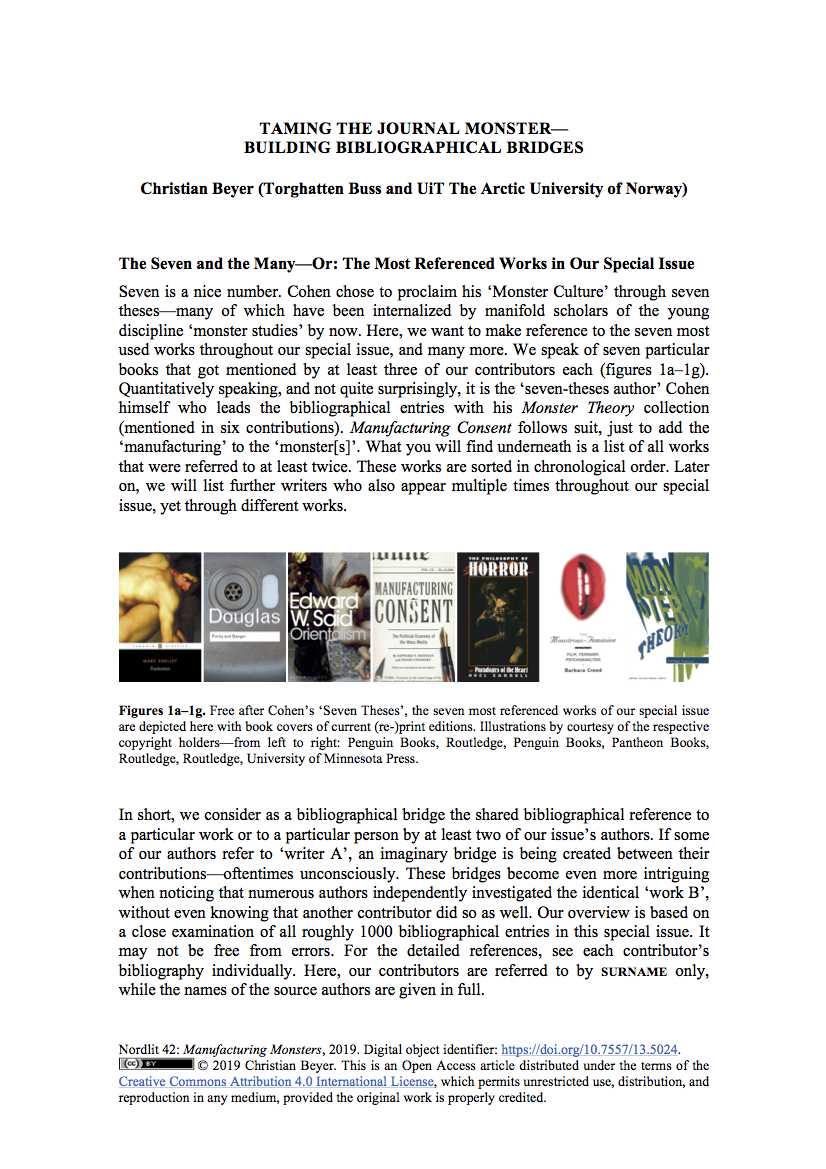Taming the Journal Monster
Building Bibliographical Bridges
DOI:
https://doi.org/10.7557/13.5024Keywords:
Manufacturing MonstersAbstract
The idea of rounding up our special issue in this way came to us while harmonizing all the bibliographical entries into one pattern. We have tried as best as we could to double-check each single source. Sometimes, names that we have never heard before appeared over and over again, in multiple contributions. Somewhere on this planet, different scholars had come across the same readings. We simply wanted to underline this complex, interwoven net of border-crossing–border-creating literature. As editors from different fields, we have learned of many intriguing discourses that were unknown to us before. Quite often, shared literature lists make visible certain symptoms of academic echo chambers, copy-paste works, or self-referencing networks. Shared foundational texts serve as sense-making tool kits to the members of so-called ‘fields’, and give a hint at somehow negotiated vocabulary within them. Yet, what we have in front of us is an example of an interdisciplinary collaboration of writers. Since our special issue had an ‘open call’, many of our collaborators do not even know each other personally. Yet, in the end, it was possible to build bibliographical bridges between all of them—every single contribution has at least one theoretical link to another article. This way, it is possible to theoretically unite our work, and consider it as (part of) a whole.
A Meta Bibliography of Some Sort—Bridging MaMo’s Bibliographies
In short, we consider as a bibliographical bridge the shared bibliographical reference to a particular work or to a particular person by at least two of our issue’s authors. If some of our authors refer to ‘writer A’, an imaginary bridge is being created between their contributions—oftentimes unconsciously. These bridges become even more intriguing when noticing that numerous authors independently investigated the identical ‘work B’, without even knowing that another contributor did so as well. Our overview is based on a close examination of all roughly 1000 bibliographical entries in this special issue. It may not be free from errors. For the detailed references, see each contributor’s bibliography individually.









